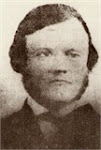Mean reported exposure [of bartenders] to secondhand smoke during an average week decreased from about 21 hours to 2 hours in the workplace, from 8 hours to about 4 hours in other places, and from 4 hours to 3 hours in the home. Among non-smokers, the prevalence of all eight upper respiratory symptoms decreased significantly (wheezing or whistling in chest, shortness of breath, cough first thing in the morning, cough during the rest of the day and night, cough up any phlegm, red or irritated eyes, runny nose, nose irritation, or sneezing, and sore or scratchy throat). Among smokers, a significant reduction in red or irritated eyes, and sore or scratchy throat was observed. Support for not allowing smoking in bars that are also restaurants and in bars/taverns increased significantly. Perceived level of health risk associated with exposure to secondhand smoke increased significantly, except among smokers.
Since "exposure to secondhand smoke is associated with an increased risk for developing lung cancer and coronary heart disease in non-smoking adults" (among other negative health consequences), it follows that the drastically reduced levels found in this report will have significant positive health outcome for these bartenders.
According to the Carbone Cancer Center web site, "The Tobacco Surveillance and Evaluation Program monitors trends in tobacco use statewide and nationally, and evaluates policies and programs funded by the state tobacco program. The program works collaboratively with the Wisconsin Division of Public Health to develop, implement, and interpret results from systems for surveillance and evaluation of Wisconsin's Tobacco Prevention and Control Program."
















No comments:
Post a Comment